
What’s happening
The JWST team has completed 10 of 17 “modes,” or checkpoints, on the road to booting up the telescope.
Why it matters
Successful testing means we’re still on the path to receiving the first JWST images this summer.
It’s almost time.
NASA is revving up to release its very first interstellar discoveries, courtesy of the groundbreaking James Webb Space Telescope. Come July 12, we may begin seeing the universe through a vastly clearer lens.
And in preparation for the highly anticipated day, JWST researchers have been meticulously perfecting each of the scope’s trailblazing pieces of equipment — on that note, we have an update.
NASA scientists announced this week that they’ve successfully calibrated the eye of a JWST-mounted device called NIRSpec. This is a pretty big milestone because of the streamlined way NASA organized the road to regular Webb use. The agency basically has to get through 17 instrument “modes,” which you can think of as testing checkpoints, through analysis and observation before fully booting up JWST.
Thus, now counting NIRSpec achievements, the agency has officially passed the halfway point on the mode ledger — bringing the grand total to 10 out of 17 complete.
“The recent confirmation of NIRSpec target acquisition … primes the NIRSpec team for our last activities of commissioning,” the team said. “We cannot wait to see the first NIRSpec science observations coming this summer!”
In fact, “the team has started to take some of the first science data,” per the agency’s release.
A quick recap of the James Webb specs
There are four key components to JWST, each of which contributes to those 17 modes outlined by the agency. Of note, almost all these facets rely on some type of infrared light detection, which means they can study a part of the electromagnetic spectrum invisible to human eyes.
“Study of the intensity or brightness of light across the wavelengths can provide key diagnostic information about the nature of various objects across the universe,” the JWST team said. “From extrasolar planets around distant stars, to faint galaxies at the edge of the universe, and objects in our own solar system.”
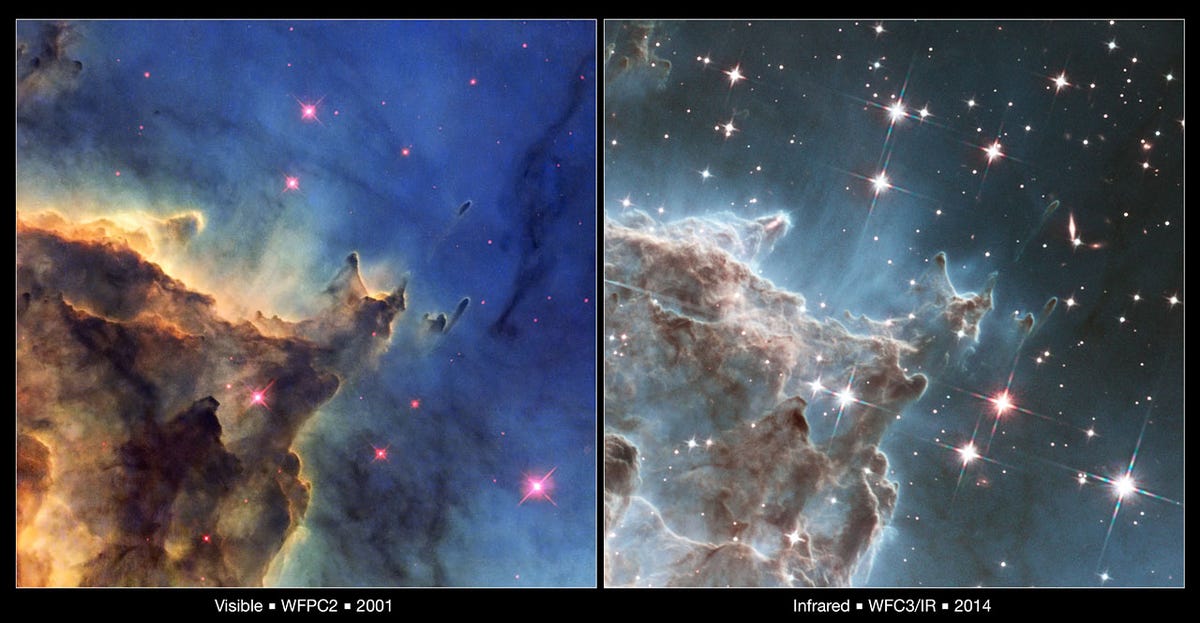
A comparison of Hubble’s visible and infrared views of the Monkey Head Nebula. Though Hubble has some infrared capabilities, it’s nothing compared with Webb.
NASA and ESA
You can read about the science of infrared in more detail here — but returning to JWST’s technology army, here’s the breakdown.
Its alpha instrument is probably the Near-Infrared Camera, or NIRCam. NIRCam will essentially lead the charge in detecting and imaging the cosmos as it was when time began. “If NIRCam doesn’t work, the telescope doesn’t work,” Alison Nordt, space science and instrumentation director at aerospace giant Lockheed Martin, who’s been a part of the JWST since the beginning, simply puts it.
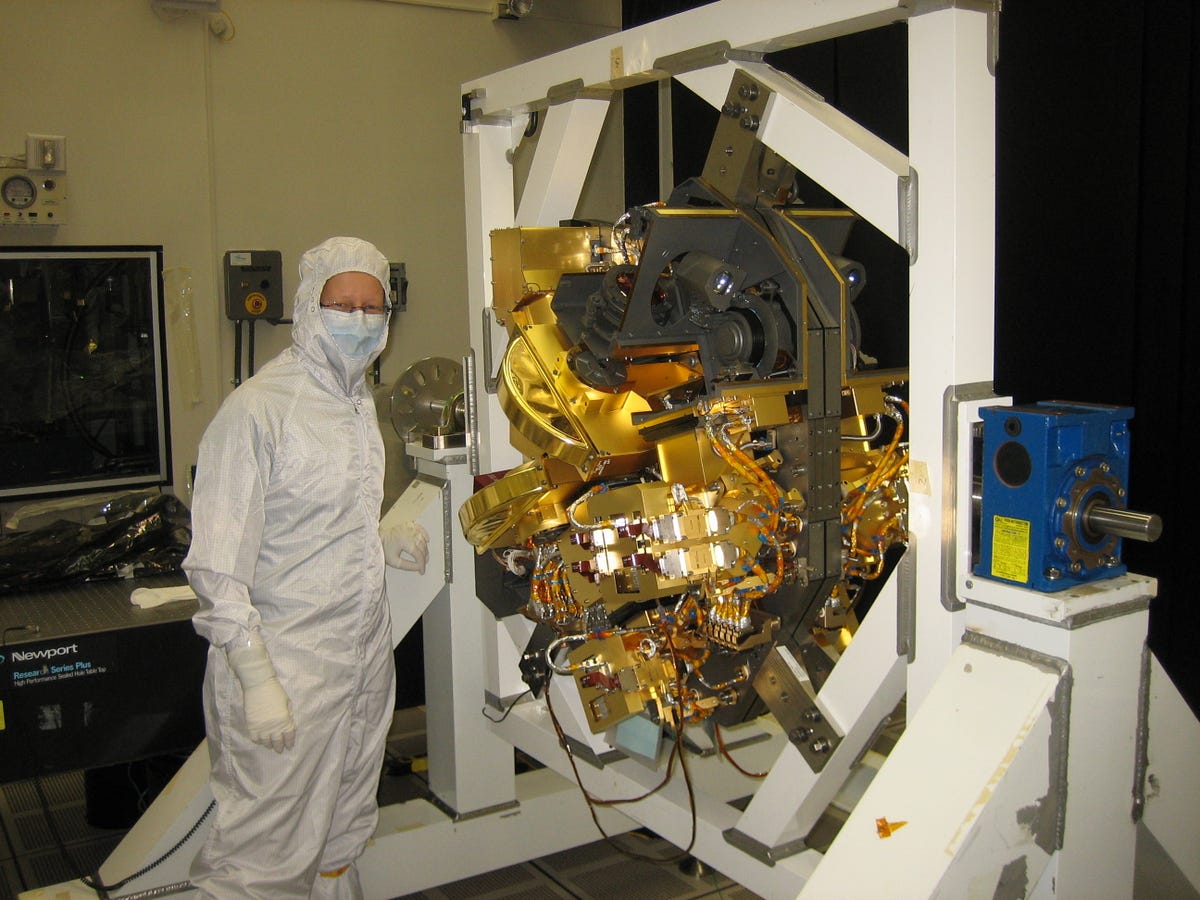
Lockheed Martin engineer Alison Nordt working on Webb’s NIRCam.
Lockheed Martin
Then, there’s the Mid-Infrared Instrument, or MIRI, which has both a camera and spectrograph aimed at dissecting items illuminated by light in the mid-infrared electromagnetic region, and the Near-Infrared Imager and Slitless Spectrograph, or NIRISS, which is basically an exoplanet hunting machine.
Also aboard JWST, you’ll find a navigation system, aka the fine guidance sensor, which helps the scope, well, not get lost. And finally, the star of NASA’s latest update is the Near-Infrared Spectrograph, or NIRSpec.
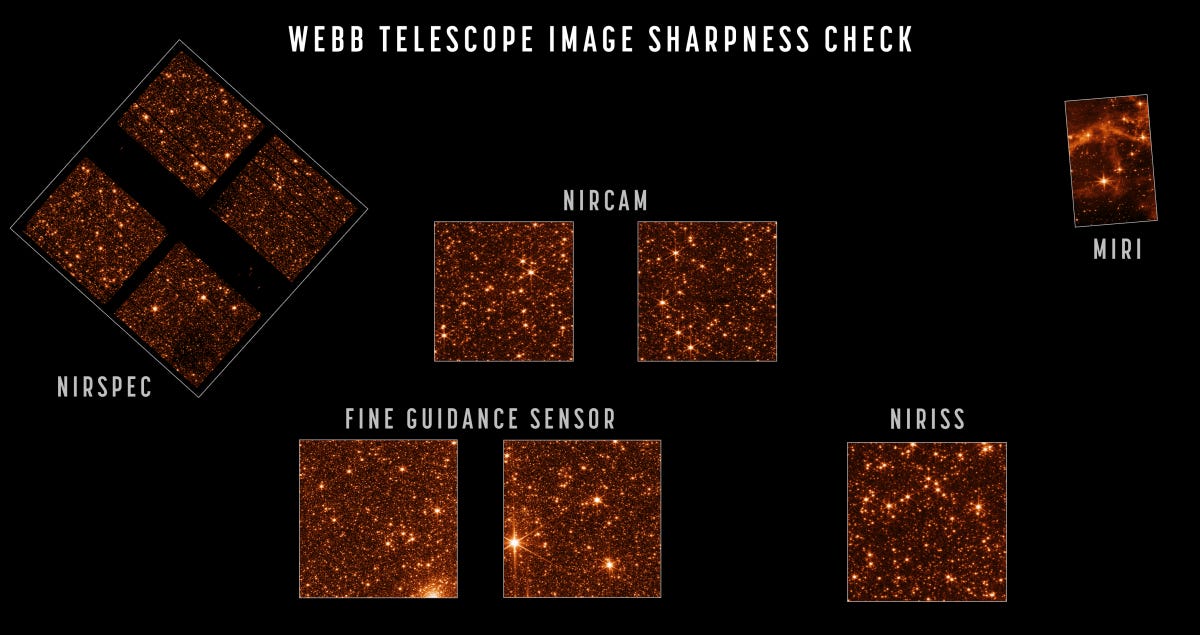
You can see an image from all of Webb’s major instruments in this collage.
NASA/STScI
What is NIRSpec?
“The Near-Infrared Spectrograph is the instrument on the Webb telescope that observes spectra of astrophysical and planetary objects at near infrared wavelengths,” the JWST team said.
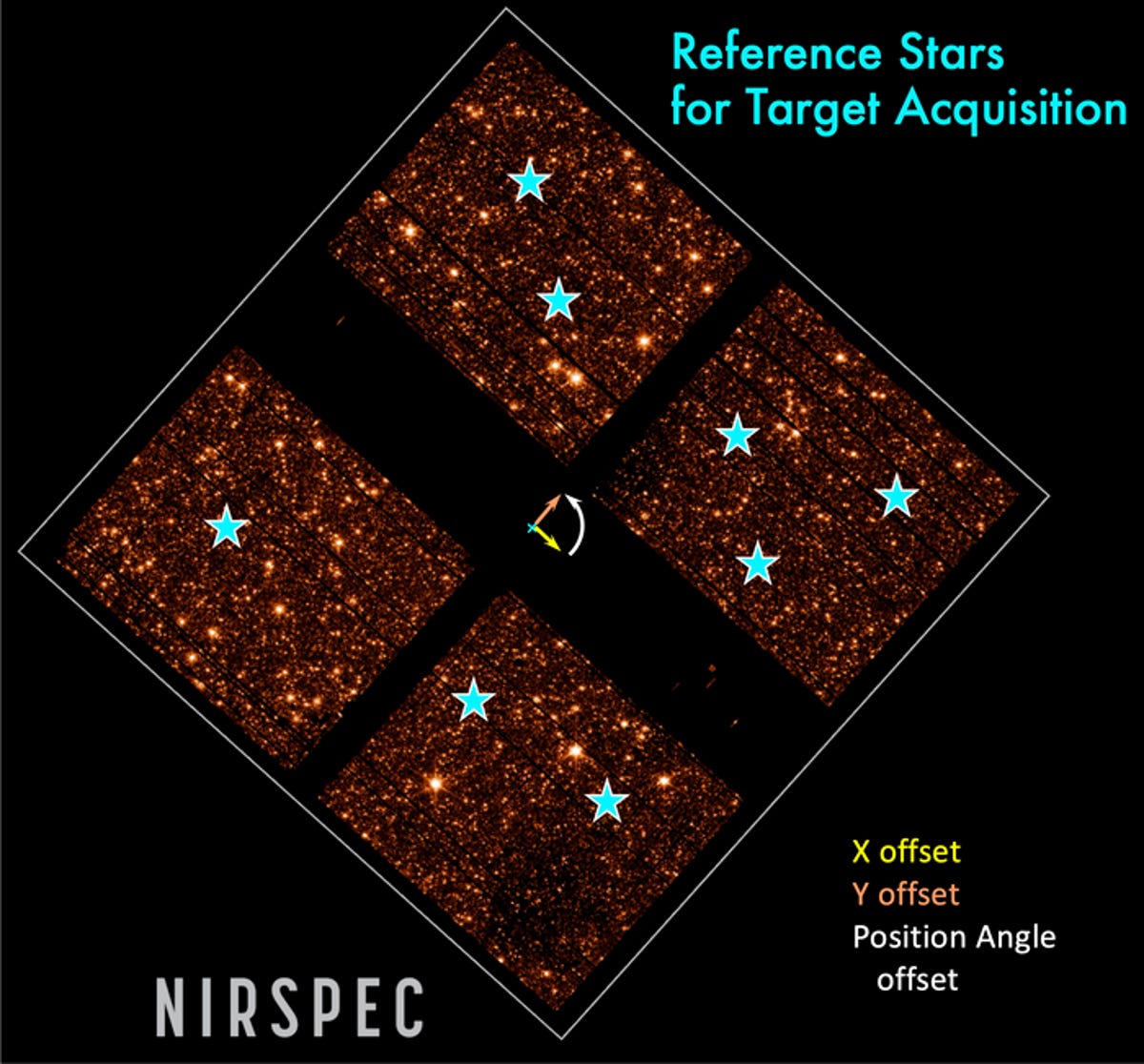
A simulation of the NIRSpec MSA-based target acquisition process, demonstrated on the NIRSpec sharpness check image. NIRSpec uses “reference Stars” that you can see here, observed through fixed slits in the device.
NASA, ESA and the NIRSpec Team
In other words, it works to examine space-borne phenomena that emanate light in the near infrared region, but rather than merely image those objects, it can study their chemical composition. That’s the intrigue of spectrography. You get more than a picture of a planet, you get details of what it would be like to stand on it.
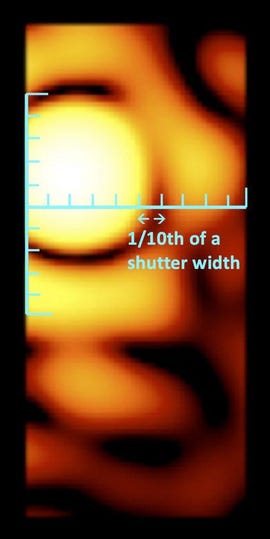
An optimized high-resolution simulation of a star seen through a NIRSpec micro-shutter. For proper intensity estimation of NIRSpec science spectra, we need to accurately know the positioning of the targets to within one tenth of the shutter width.
NASA, ESA and the NIRSpec Team
And in terms of target acquisition, the JWST team says NIRSpec has an important mirror, which can place cosmic targets in their proper locations as the telescope explores. This is crucial because such information helps NIRSpec’s spectrograph know where to look.
There are two ways the mirror does this — the Wide Aperture Target Acquisition (WATA) and Micro-Shutter Assembly-based Target Acquisition (MSATA). During testing, the team said, WATA performed “excellently” and MSATA made solid progress, and lucky for us, both successes give us awesome cosmic pictures, like the one featured up top.
Further, with regard to MSATA, the JWST team says this method is quite difficult to nail down. It calls for a proper estimation of iNIRSpec science spectral intensity within one-tenth of the device’s shutter width. That’s incredibly precise. For context, it’s “the approximate size of a bumblebee, 1.5 centimeters, viewed from 150 kilometers away,” the team said.
Now that NASA has these successes down, just seven more modes to go before we hit July 12 — the day we’ve all been waiting for.
To the stars, JWST.
